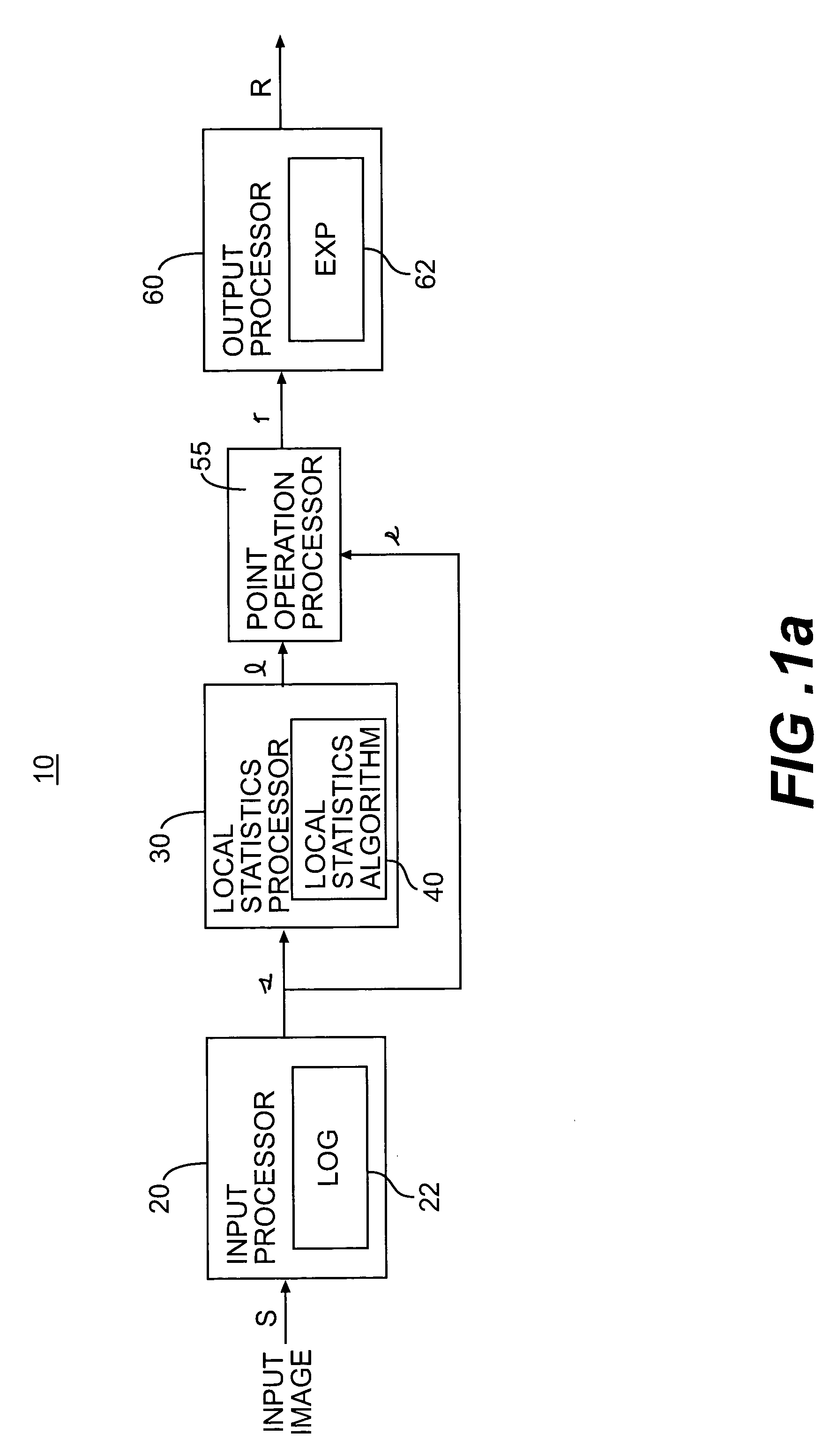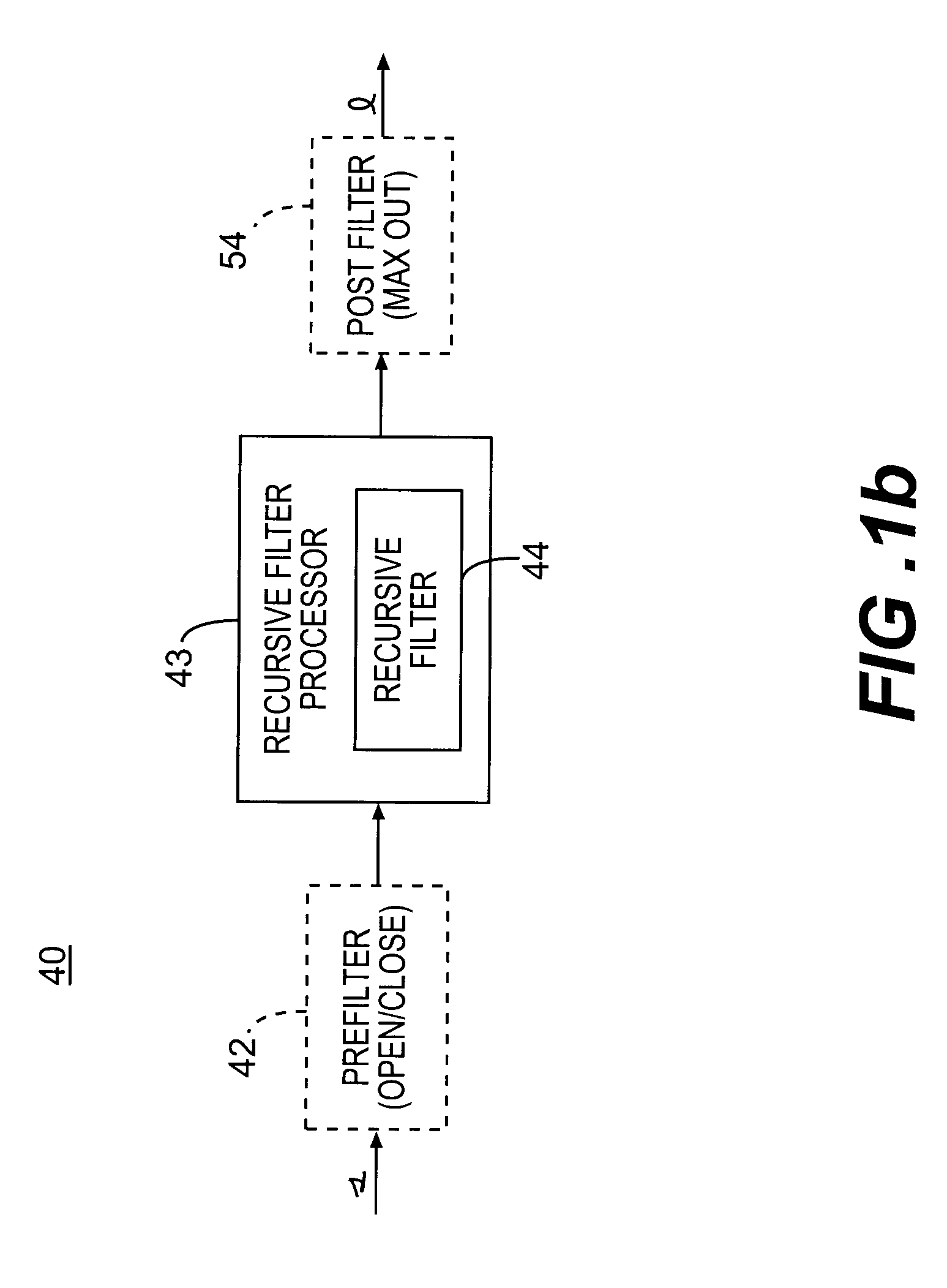Robust recursive envelope operators for fast retinex-type processing
- Summary
- Abstract
- Description
- Claims
- Application Information
AI Technical Summary
Problems solved by technology
Method used
Image
Examples
Embodiment Construction
To overcome computational problems with prior art Retinex modeling, a robust envelope algorithm based on recursive filtering is disclosed. The algorithm is developed in the context of a Retinex-type algorithm. Also disclosed are ways to determine stable filter parameters. The filter can be stabilized by making the filter scale invariant. A filter is scale invariant when its output for a scaled input is a scaled version of the original output (or at least very nearly so). Finally, what is disclosed is a scheme for a scale-independent version of robust recursive envelope filters.
Retinex-type algorithms are image enhancement algorithms based on calculating some local support statistics and modifying the input image according to the local statistics. Retinex-type algorithms take several different forms. One such form is the random walk algorithm, which is a discrete time random process in which the “next pixel position” is chosen randomly from neighbors of the current pixel position....
PUM
 Login to View More
Login to View More Abstract
Description
Claims
Application Information
 Login to View More
Login to View More - R&D
- Intellectual Property
- Life Sciences
- Materials
- Tech Scout
- Unparalleled Data Quality
- Higher Quality Content
- 60% Fewer Hallucinations
Browse by: Latest US Patents, China's latest patents, Technical Efficacy Thesaurus, Application Domain, Technology Topic, Popular Technical Reports.
© 2025 PatSnap. All rights reserved.Legal|Privacy policy|Modern Slavery Act Transparency Statement|Sitemap|About US| Contact US: help@patsnap.com



